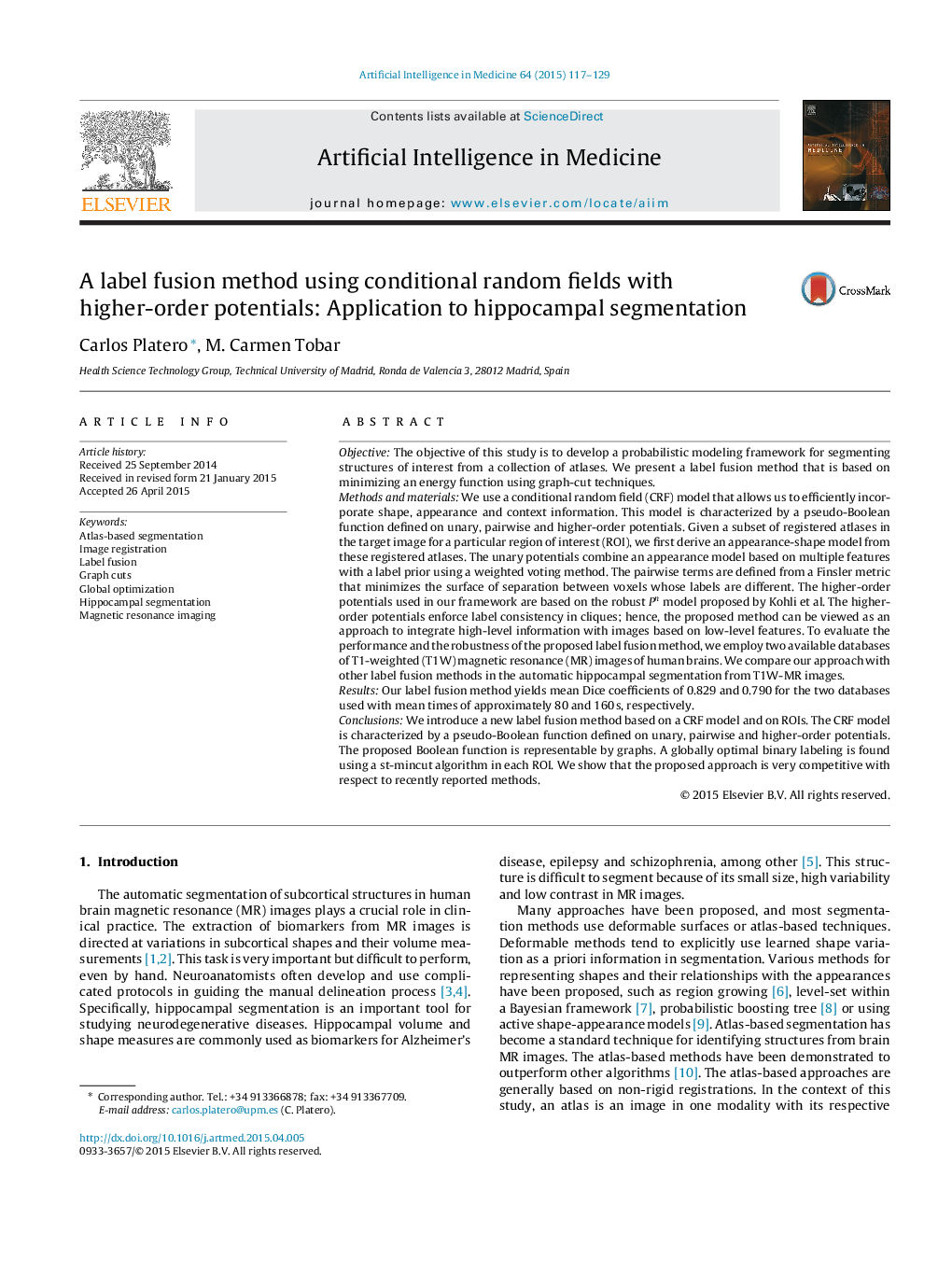| Article ID | Journal | Published Year | Pages | File Type |
|---|---|---|---|---|
| 377592 | Artificial Intelligence in Medicine | 2015 | 13 Pages |
•A label fusion method based on minimizing an energy using graph-cuts is presented.•The discrete energy is defined on unary, pairwise and higher-order potentials.•Two available databases of T1-weighted magnetic resonance images are used.•We compare several label fusion methods in the hippocampal automatic segmentation.•The scripts for running are available at https://www.nitrc.org/projects/lf_crf/.
ObjectiveThe objective of this study is to develop a probabilistic modeling framework for segmenting structures of interest from a collection of atlases. We present a label fusion method that is based on minimizing an energy function using graph-cut techniques.Methods and materialsWe use a conditional random field (CRF) model that allows us to efficiently incorporate shape, appearance and context information. This model is characterized by a pseudo-Boolean function defined on unary, pairwise and higher-order potentials. Given a subset of registered atlases in the target image for a particular region of interest (ROI), we first derive an appearance-shape model from these registered atlases. The unary potentials combine an appearance model based on multiple features with a label prior using a weighted voting method. The pairwise terms are defined from a Finsler metric that minimizes the surface of separation between voxels whose labels are different. The higher-order potentials used in our framework are based on the robust Pn model proposed by Kohli et al. The higher-order potentials enforce label consistency in cliques; hence, the proposed method can be viewed as an approach to integrate high-level information with images based on low-level features. To evaluate the performance and the robustness of the proposed label fusion method, we employ two available databases of T1-weighted (T1W) magnetic resonance (MR) images of human brains. We compare our approach with other label fusion methods in the automatic hippocampal segmentation from T1W-MR images.ResultsOur label fusion method yields mean Dice coefficients of 0.829 and 0.790 for the two databases used with mean times of approximately 80 and 160 s, respectively.ConclusionsWe introduce a new label fusion method based on a CRF model and on ROIs. The CRF model is characterized by a pseudo-Boolean function defined on unary, pairwise and higher-order potentials. The proposed Boolean function is representable by graphs. A globally optimal binary labeling is found using a st-mincut algorithm in each ROI. We show that the proposed approach is very competitive with respect to recently reported methods.
Graphical abstractFigure optionsDownload full-size imageDownload high-quality image (109 K)Download as PowerPoint slide
